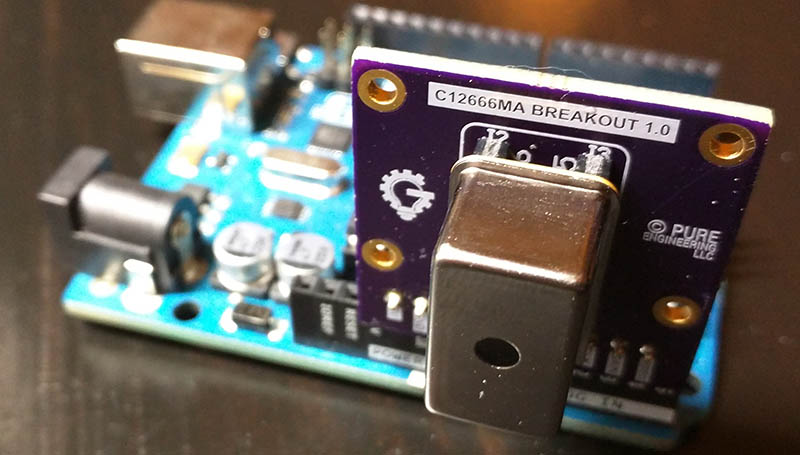Before you attempt to solve a problem, you must first study the problem. If there’s a problem with the environment, you must therefore study the environment at a scale never seen before. For this year’s Hackaday Prize, there are a lot of projects that aim to do just that. Here are a few of them:
[Pure Engineering]’s C12666 Micro Spectrometer has applications ranging from detecting if fruit is ripe, telling you to put sunscreen on, to detecting oil spills. Like the title says, it’s based on the Hamamatsu C12666MA spectrometer, a very tiny MEMS spectrometer that can sort light by wavelength from 340 to 780nm.
The project is to build a proper breakout board for this spectrometer. The best technologies are enabling technologies, and we can’t wait to see all the cool stuff that’s made with this sensor.
[radu.motisan]’s portable environmental monitor isn’t just one sensor, but an entire suite of them. The design of the project includes toxic and flammable gas sensors, radiation detectors, dust sensors, and radiation detectors packaged together in a neat, convenient package.
[radu] has already seen some success with environmental sensors and The Hackaday Prize; last year, his entry, the uRADMonitor placed in the top fifty for creating a global network of radiation sensors.
















Toooooo
Manyyyyy
Hackadayyyyyyu
Promotionssssss
It’s almost like there’s a company trying to make a profit from this site.
:-)
No kidding. I’m not sure I’ll make it another 4-5 months at this rate. Maybe it’s time to start filtering out posts tagged with “2015 Hackaday Prize”. Good thing that’s easy to do:
http://hackaday.com/2015/04/06/advanced-not-reading-technology/
I didn’t even know about this post till now. Thanks Hackaday.
What is a one-off price for this sensor? I didn’t find any in the first 4 pages of Google
Here: https://hackaday.io/project/4141-c12666ma-micro-spectrometer
“Note that most of the costs of this product is for the C12666MA sensor itself @ $250.”
It’s 300 for the sensor and Pure Engineering’s breakout board. 50 bucks for a breakout board seems like a lot. I’m not sure why you would need a breakout board, the sensor is breadboard friendly.
The breakout board adds needed I/O level shifting. Analog buffering. Power supplies, as well as a laser source and a white LED source. much more than jsut a breakout.
The importance of a consistent test environment, or how that *has not* been the case for a few decades with the United States Historical Climate Network. http://surfacestations.org/
A mountain from a mole hill.
“The design of the project includes toxic and flammable gas sensors, radiation detectors, dust sensors, and radiation detectors packaged together in a neat, convenient package”
When one radiation detector is not enough
well there are two radiation sensors. Alpha, then a Beta and Gamma…
The ramen spectroscopy function looks interesting. At last, I will be able to tell when my noodles are perfectly cooked!
It works by using FFT to compare the frequency distribution of a perfectly cooked noodles waviness to the noodles currently being cooked. You can update the library using custom collected fingerprints so that you can use any brand of ramen noodle and not have it give false positives.
But seriously It just collects scattered light and the way it’s scattered tells you what molecules are invovled. The scattering induces excitation, and thus frequency/color shifts in the light.
The spectrometer has 15 nm resolution, which in this region works out to be ~700 cm^{-1}. That’s not enough to actually get any useful info with Raman scattering. Broader peaks (fluorescence, reflection…) would still be good, though.
Now you can find out what secret ingredients used in the ramen with SCIENCE just like those CSI shows on TV!
C12666MA is a really small thing and 15nm resolution means absolutely no one can say it isn’t a really small thing.
http://oceanoptics.com/product/spark-vis/ weighs less, has almost twice as good resolution, and is USA-ian for those that want to order from that side of the pond. Also has an (optional) digitizer/usb interface output.
Environmental sensors are revolutionary things in today era.